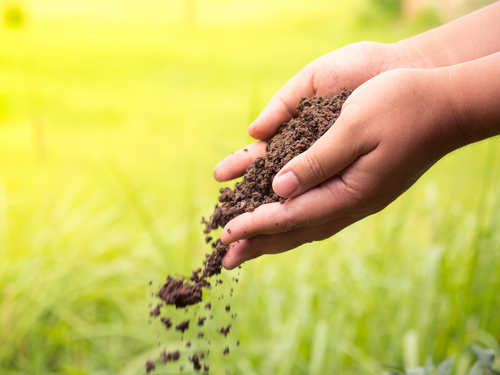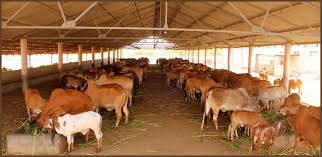Moringa for cow fodder.
We have received emails from many readers – to share information about how moringa plants can provide steady supply of fodder. We will share these emails as we receive them.
We do not own copyright for these contents. We are simply reproducing them as received.


Let us start with a video outlining how to grow moringa. If you are a gaushaala, and you need guidance, you can call the Jai GauMaata Samiti at phone +91 9819672010
Growing and processing Moringa leaves –
http://www.moringanews.org/documents/moringawebEN.pdf
For additional reading, here are some links to more information
http://www.newforestsproject.org/pdfs/Haiti_Moringa%20Project_Website.pdf
Summary article that was emailed to us –
Introduction
India possesses the highest livestock population in the world, which is growing at the rate of 4.8% per year. Accordingly, the country’s feed requirement to feed such a large livestock population is also increasing. Regular supply of adequate and nutritious feed and fodder is essential for the development of livestock sector. Fodder crops are the main and cheapest source of roughage feed for livestock. However, shortage of quality fodder, particularly during lean periods is major factor contributing to lower livestock productivity. Currently, the country faces a net deficit of 35.6% green fodder, 10.95% dry fodder and 44% concentrate feed ingredients. The demand for green and dry fodder will reach to 1012 and 631 million tonnes by 2050. Therefore, to meet out this deficit, fodder supply has to grow at 1.69% annually to sustain livestock husbandry. Since last two decades, static area under cultivated fodder is only 8.4 m ha (less than 5%). Forage have an important role to play in ruminant nutrition in providing energy, protein and minerals and fiber for chewing. Tree fodders could be a good option to meet the fodder demand of livestock in areas having a perennial shortage of green fodder. Research efforts have confirmed the potentiality of browsing plants to provide alternate source of nutrition for ruminants in tropics. There is a huge list of such browse trees and shrubs with potential use as fodder, which may go even up to more than 300 species.
One such tree which gives fodder for ruminants is Moringa, popularly known as “drumstick tree” for its pods that are used by drummers, and also known as “horseradish tree” for the flavor of its roots. Drumstick scientifically called as Moringa oleifera and is called Saijan in Hindi. This fast-growing tree is grown throughout the tropics for multi-purpose use viz. human food, livestock forage, medicine values, dye, water purification, and for its wide adaptability and ease of establishment. Moringa leaves contain a good amount of beta-carotene, protein, vitamin C, calcium, magnesium and iron. Since Moringa leaves are rich in protein, so can be used as a supplemental fodder for milch animals. Rather, its leaves contain much higher protein than conventional protein supplements like coconut meal, cotton seed cake, ground nut cake, sesame cake, sunflower cake etc. Besides these, the leaves posses antioxidant and antimicrobial properties against several fungal species such as E. Coli, S. Arous, P. Aeruginosa, and B. Cereus. Moringa can be grown as hedge, fence, and multi-cut forage, etc.
Nutritional Profile
Macronutrients like P, K, Ca, and Mg play key roles in balancing the physiological, metabolic, and biochemical processes of livestock. Cattle suffer from low blood Mg during lactation, which causes low milk yield due to deficiency of mg. Moringa leaves contain high amount of macronutrients Mg and K, and can be effectively used to fulfill the dietary and nutritional requirements of livestock animals by mixing of moringa leaves with other fodders or grasses.
Fodder Production Potential
The biomass production of moringa is affected by climatic condition, spacing, cutting height, planting pattern, geometry and cutting frequencies. Highest Crop growth rate (CGR) was in narrow spacing. Highest fodder yields of moringa from plants is obtained when spaced at 30 x 40 cm. In the rainy season, harvesting the crop at an interval of 4 to 6 weeks at a height of 150 cm gives the highest yields. In the dry season 12 week harvest interval gives highest biomass yields with a cutting height of 100cm. On an average 4.2 to 8.3 t ha-1 dry matter yield can be obtained.
Effect of Moringa Fodder on Growth & Milk Yield
Moringa fresh foliage can be included into the dietary roughage component for ruminants. It has shown positive effects on feeding behavior of goat, increased growth rate in sheep and increased milk yield in dual purpose cows. MLM (moringa leaf meal) can be included into the diet of fish, laying hens and cross-bred dairy cows. Moringa supplementation resulted in a highest average weight gain of 20.83 g/animal/day in goats feed and protein was efficiently utilized by animals when moringa leaves was used as a fodder supplement. Moringa contains 0.20 g P and Na /100 g DM, which is higher than diet requirements of goats viz. (0.07 g/100 g DM). Moringa diet had the highest efficiency of protein utilization, nutrient digestibility, nitrogen utilization. It improves the milk yield of ruminants as it has a good rumen bypass protein characteristics. In fact, MLM can be used as a substitute for other oil cakes.
Potential Areas
Dry lands offer a good scope for development of agro forestry, social forestry, horti-silvi-pasture and other similar systems which will not only supply food, fuel to the village people and fodder to the cattle also a suitable vegetative cover for ecological maintenance. These fodder trees are gaining more attention due to low maintenance and less input requirements and their capability to provide good quality forage during the periods of food scarcity. Moringa is one of the best nutritious trees which can provide sufficient fodder for livestock during dry season. Once their roots have developed and established it is even resistant to frequent cuttings in drought situations.
It is a fast growing tree with efficient capability of re-growth after pruning and capacity to produce good quality higher leaf biomass per unit area and can tolerate long dry spells up to 6 months during dry season and grow well with annual rainfall between 250‒1500 mm per year and temperature ranging from 19 to 28 ºC. It is best suitable for agro forestry system such as Home garden and multi-storied cropping system with plantation crops in dry land farming areas of southern India.
In Degraded & Desertified Lands
Land degradation and desertification are complex phenomena caused by both natural and anthropogenic factors. Silvipastoral system is the most prominent agro forestry system suitable for these degraded and desertified areas. The system is characterized by integrating trees with forage and livestock production. Moringa is the best protein rich multipurpose tree can be planted on these areas for cut and carry fodder production to meet the fodder requirements of livestock during the fodder deficit periods.
Salt Affected Soils
In arid and semi arid regions annual rainfall is not sufficient to leach down salt to the deeper layers of soil. Moringa is a drought tolerant plant that can be grown in diverse soils, except those that are waterlogged. Slightly alkaline clay and sandy loam soils are considered the best media for this species due to their good drainage. Moringa can be introduced as a fodder crop in these salt affected areas.
Low Fertility Soils
The major limiting factor of fodder production in the tropics is the deficiency of soil nutrients which affects the growth, nutrient content, and uptake of the plant, Due to low levels of nitrogen, phosphorus, and organic carbon. Fodder production in these areas mainly dependent on application of high amount NPK based fertilizers. Moringa can be grown as a fodder crop on marginal lands with high temperatures and low water availability. It requires fertilizer application only during initial stages of growth. Moringa can be grown in versatile conditions including hot, humid, dry tropical and subtropical regions, except waterlogged soils. It can perform better under marginal conditions with ample nutritional quality.
Conclusions
Moringa being rich source of nutrients and metabolizable energy can be considered as alternative fodder for livestock. It can be grown in most of the tropical climatic zones and have low demand of soil nutrients and water. In dairy farming system it can sustain green fodder availability round the year without extra efforts. Its versatile nature makes it fit in various cropping systems, because it can be grown as crop or tree fences in alley cropping systems, in forestry systems, and even on marginal lands with high temperatures and low water avail abilities where it is difficult to cultivate other agricultural crops.
by Subrahmanya D.J., Malu Ram Yadav, Dr. Rakesh Kumar
& Dr. Hardev Ram, NDRI, Karnal